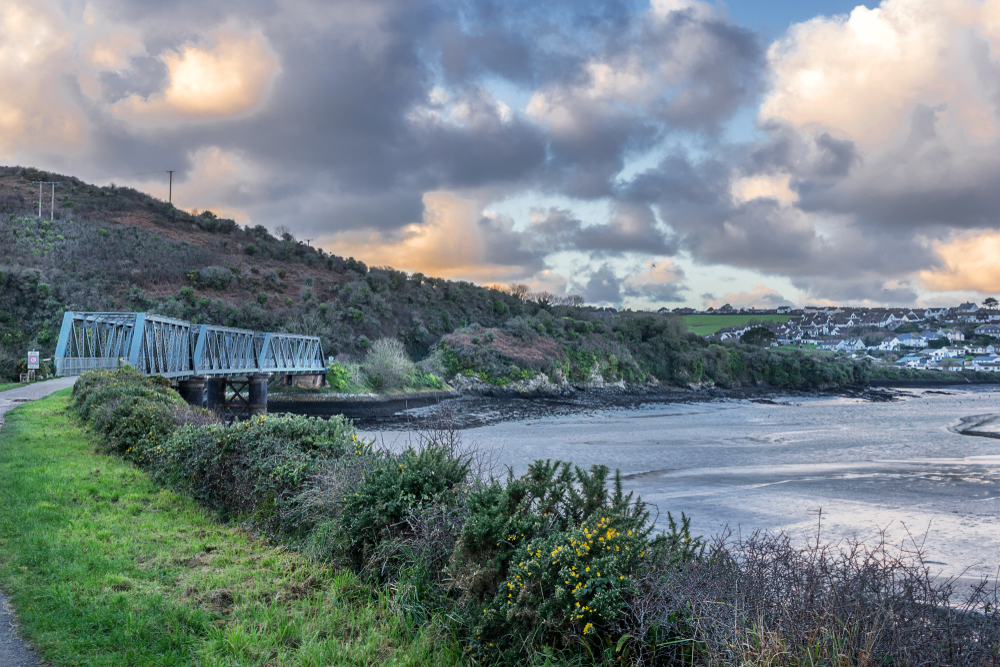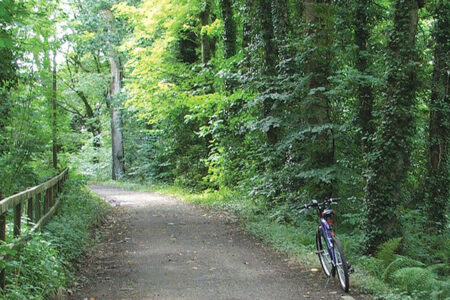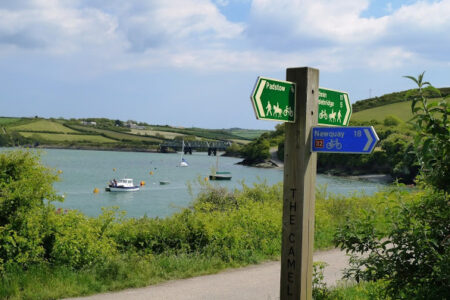Padstow makes an excellent base for exploring the varied delights of the Cornish coast and countryside. The best known route is the South West Coast Path, originally used by coastguards for spotting smugglers.
Completed in 1978, it was designated for ramblers who can traverse the entire 630 miles, taking in delights such as the Tin Coast, which will be of particular interest to fans of Poldark.
Alternatively you can head due south along the Saint’s Way, the last stage in a pilgrimage route that was rediscovered in 1984. This takes you 27 miles cross country to Fowey, passing through Wind in the Willows country at Gollant.
Easily the most accessible of Padstow’s walking routes is the Camel Trail, a journey along a former stretch of railway that’s divided helpfully into three stages. You can find out more about the different routes and places to stop along the way in our guide. In this post we’ll explore the trail’s fascinating history which reflects the changing fortunes of Cornish industry and tourism.
Padstow: gateway to the world
The Bodmin to Wadebridge railway dates back to 1831 when local landowner Sir William Molesworth of Pencarrow saw the potential of moving sand from the Camel estuary inland, to farms where it could be used as fertiliser.
As England’s railway network expanded the London and South Western Railway bought and connected the lines. By the end of the century, passengers could reach Padstow from London Waterloo, making it possible to reach Cornwall’s north coast in just 6 hours.
Industrial lifeline
The railway was a vital link for Cornwall’s major industries. It allowed the slate and china clay to be transported from inland quarries to Padstow where it was exported around the world. Fish, the county’s most enduring export, could now reach markets in cities around the UK.
But as quarrying ended and fishing declined the railway lost most of its traffic and the line was forced to close in 1983.
The most beautiful train journey
The final passenger train on this stretch of Atlantic Coast Express left Waterloo and arrived in Padstow in 1967 thanks to the cuts of Lord Beeching. So it was already a distant memory when Sir John Betjeman remembered the journey in Betjeman’s Cornwall in 1984. He famously described the five and a half miles beside the Camel estuary as “the most beautiful train journey I know.”
For Betjeman it was best to make the approach in the evening, at high tide, “with golden light on the low hills, the heron-haunted mud coves flooded over, the sudden thunder as we cross the bridge over Little Petherick creek, the glimpses of slate roofs and a deserted jetty among spindly Cornish elms, the wide and unexpected sight of open sea at the river mouth.”
Reverse Beeching
Happily the great beauty described by Betjeman can still be enjoyed thanks to this feat of practical engineering. The line was built so trains could avoid steep hills and sharp turns. These same characteristics make for the perfect cycle path, and the first bike hire company set up shop the same year that the railway closed.
There have been attempts to reopen parts of the railway over the years, with the latest announced in 2020 following the government’s announcement of a “Reversing Beeching Fund.” For now though, rail enthusiasts will have to settle for a visit to the Atlantic Coastal Express; a vintage train carriage serving food and hot drinks to walkers and cyclists.
You can read more about that and the many other pleasures of the Camel Trail in our next post.


